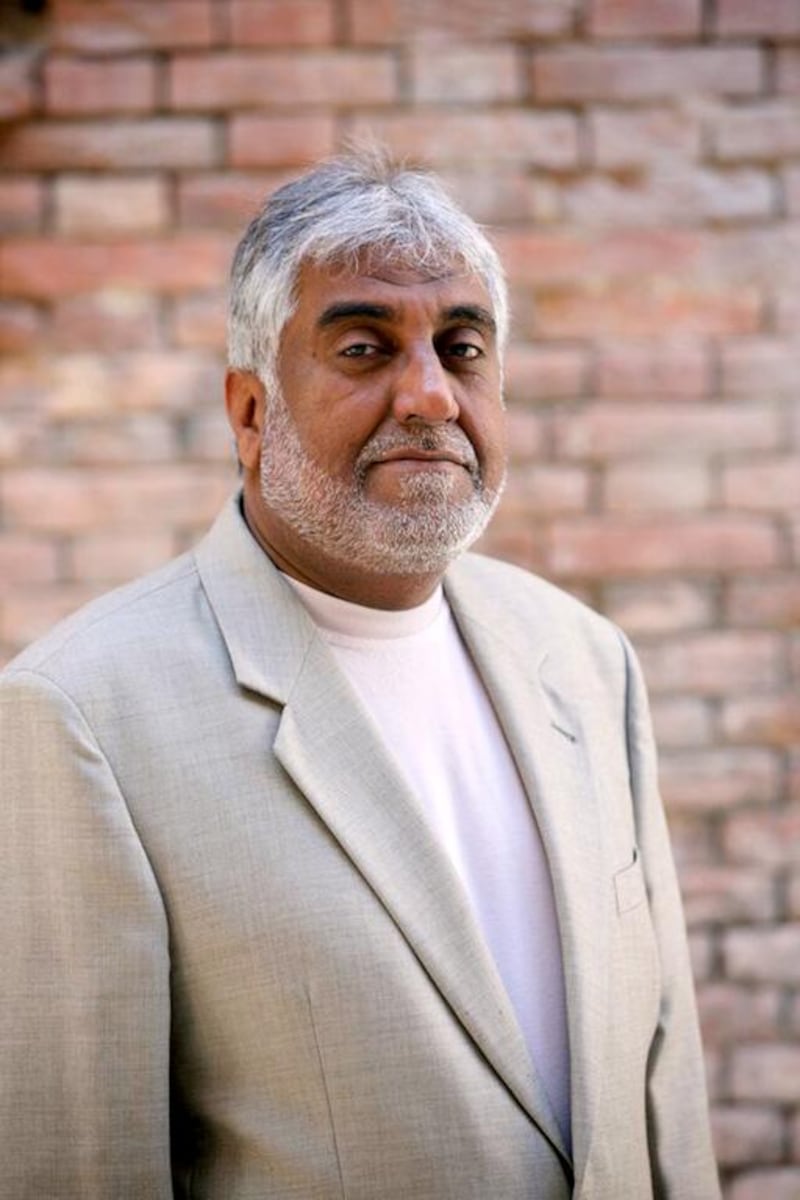Mohamed Yousif is not exactly a fan of the more conventional ways of exhibiting art. “I don’t like my artwork to be stuck inside,” says the 63-year-old Emirati artist.
“It will suffocate inside. I prefer art to always be placed outside to live, where it can breathe.”
His studio, inside his home in Sharjah, has only the bare minimum of equipment and feels more like a storage room for his tools and materials. It is devoid of any completed pieces. He rarely creates in his studio, he says. He instead prefers to work outdoors, moving between Sharjah, Ras Al Khaimah, Fujairah and Khor Fakkan in an effort to work in diverse environments. “I like to work after 6pm and through the night; it’s a little less hot,” he says.
“Of course, I have a studio – one in my home and one in the Sharjah National Theatre – but I don’t keep my art in them. I don’t want my work to be imprisoned in a room or a museum. Art has to be out in nature, for all to see, for all to breathe it. Hanging it up in a square room, for people to just point at it, is like putting it in a graveyard, it makes me sad. This is a piece of me, art from my body. It needs to move and be a part of the world.”
It is little wonder that the artist cites installations as his favourite medium of expression. Any meaningful piece of art, he says, must have a relationship with the environment around it, whether it’s the desert or the sea or even the breeze; being outdoors allows art to become alive and unrestrained.
When Yousif was first approached to join 14 other Emirati artists, many of whom he considers “dear friends”, to display work he created 20 to 30 years ago at the 56th Venice Biennale at the UAE Pavilion, he admits he was a little worried about how the art would be displayed.
“I am happy with how things are in Venice,” he says. “The art is not closed in: it is open, there is sunlight and glass and it fits what I want to say. The art feels right there.
“You have to understand, this is not new art we are displaying, but to us it is even more important than the new art. This art has deep roots for us, it marks the beginning. We are all artists from the 1960s and 1970s, we are the pioneers of modern art in our country and for us this is a source of immense pride.”
Yousif is not exaggerating. He is a founding member of the Emirates Fine Arts Society, set up in 1979. He took a drawing of a beggar, sketched by his artist friend Ahmed Al Ansari – who is also showing at Venice – and used it to literally beg for support of the arts. His efforts garnered tables, chairs, money and a house, which became the first headquarters of the society.
“We are artists who cared nothing about the politics of the land. We just wanted a place to paint and draw and create. It was a special age for the UAE, when our country was being created, but for me it was a world of black and white, when I was learning by a lamp. I am from the generation that is entrenched in tradition and I learnt to work with the basics.”
Today’s young generation of artists, says Yousif, could benefit greatly from understanding the work of the 15 artists exhibiting at Venice, all of whom created this art 20 or sometimes 30 years ago. The temptation of fame, he says, makes artists hasty and one-dimensional.
“I tell this current generation of artists: go spend time with your parents, go ask your grandparents, when you research, go seek the real stories, stay away from Google and copy paste, put away the iPad and the iPhone when you create and start with the basics.
“Explore, listen, hear, use all your senses. Go see how people adapted.”
Yousif says it makes him sad how much Photoshop factors into artwork these days.
“It produces fake, synthetic colours,” he laments.
Film, for example, is much more visible than theatre, and everyone wants to use their iPhone.
“I used to sweep the floor of the theatre at the end of every day,” says Yousif, speaking about the Sharjah National Theatre, where he was the former chairman of the board of directors. “I slowly moved up, working on the sets and decor, creating props, working on puppet theatres. I even sang for a while.”
For an artist, insists Yousif, it’s never about fame and much more about contributing to the cultural stage of one’s country.
“My art allows me to be part of the conversation of this land,” he explains. Motion – and even the lack of it – are prominent themes in Yousif’s art. One of his favourite sculptures is a wooden piece entitled Isteeqath (Waking Up), which was created in 1984. It was his first choice to send to Venice.
“It is a solid piece, but in it there is movement. I see the idea in my head, but it continues moving inside me, and that is how I try to create it. This is a piece standing still, but it is in the process of reaching a different state of being, in motion.
“To me, this is art.”
• 1980 – Today: Exhibitions in the UAE runs as part of the 56th Venice Biennale until November 22. Fifteen Emirati artists are showing their works in the UAE Pavilion at the Biennale, which runs until November 22
artslife@thenational.ae





